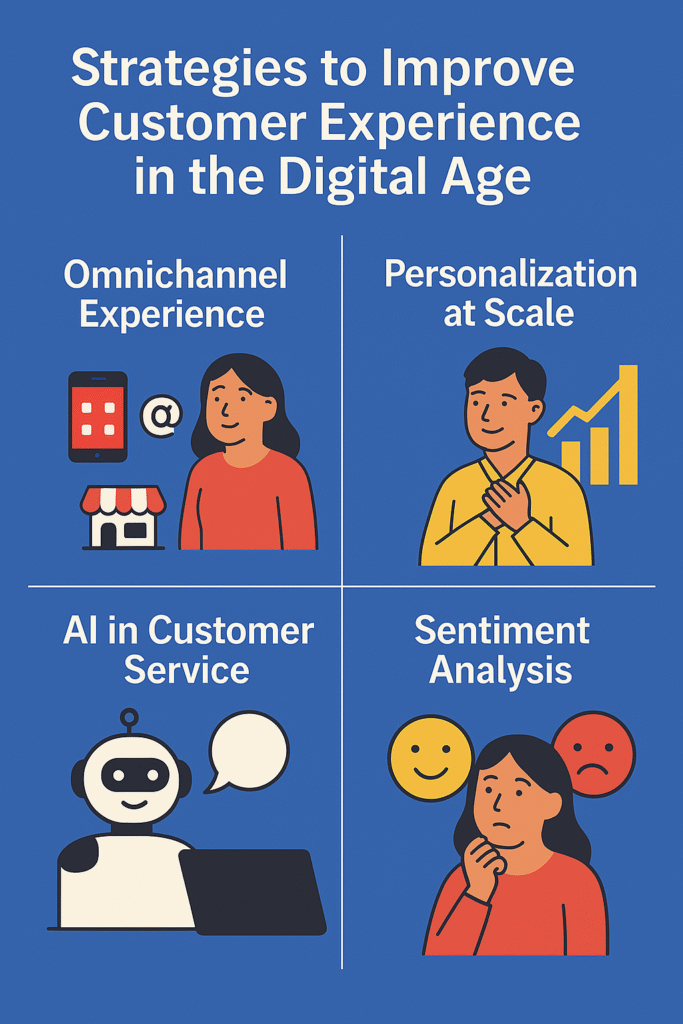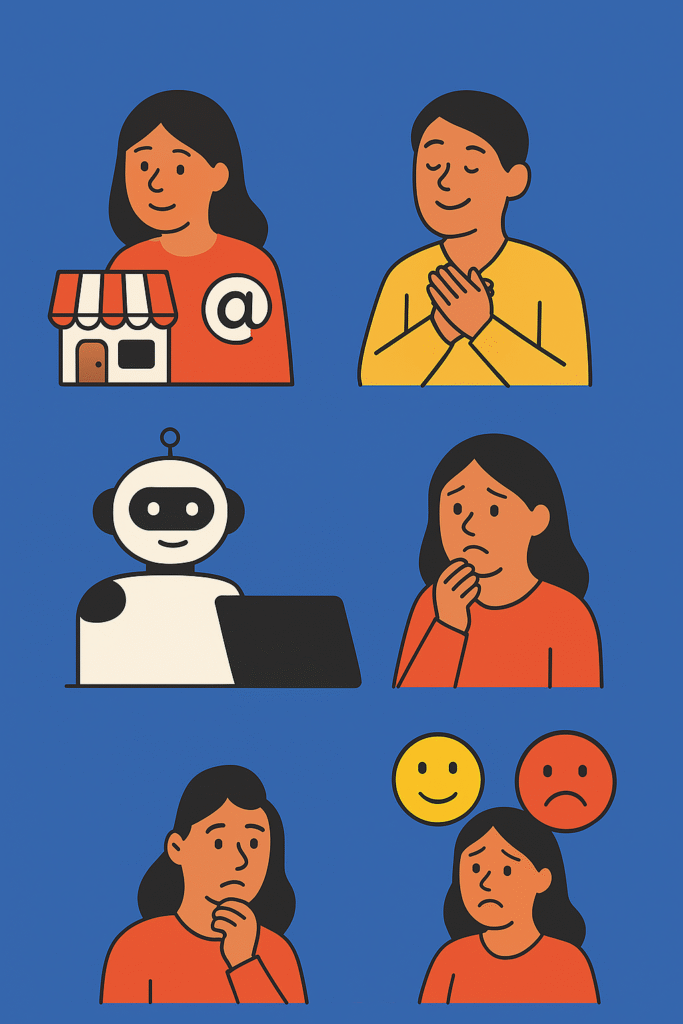

Introduction
Customer experience (CX) has become a key factor in the success of companies, directly impacting customer loyalty and their continued engagement with the brand. In the digital age, customers no longer accept traditional experiences; they seek more personalized and seamless interactions that cater to their needs. Thus, businesses must adopt modern strategies to ensure an exceptional customer experience that aligns with increasing expectations.
1. Omnichannel Experience
In the past, the relationship between companies and customers was based on limited channels such as phone calls or emails. However, with technological advancement, customer experience now relies on interaction across multiple channels, including:
- Websites
- Mobile applications
- Social media platforms
- Smart assistants (such as Chatbots and Copilot)
- Physical stores
Why is Omnichannel Experience Important?
Customer expectations have evolved significantly over the years, and they now demand a consistent and seamless experience regardless of the channel they use. For example, if a customer starts their shopping journey on the company’s website and later switches to the app to track their order, the transition should be smooth without requiring them to re-enter their details.
How to Implement This Strategy?
- Integrating all channels into a unified system: Ensuring synchronization between all touchpoints the customer interacts with.
- Analyzing data to understand engagement: Using data analysis to identify customer preferences and improve their experience.
- Leveraging AI to guide customers: AI can provide recommendations based on customer behavior across different channels.
2. Intelligent Personalization (Personalization at Scale)
Generic recommendations and content have become ineffective in achieving customer satisfaction. Today, customers expect businesses to understand their unique needs and provide personalized experiences.
Why is Intelligent Personalization Important?
Studies indicate that 80% of customers prefer interacting with companies that offer personalized experiences, leading to:
- Higher customer satisfaction rates
- Increased conversion and sales
- Enhanced brand loyalty
How Can Personalization Be Achieved?
- Smart utilization of customer data: Analyzing customer behavior and preferences to tailor experiences.
- AI and machine learning technologies: Providing intelligent recommendations that suit each customer individually.
- Dynamic content in websites and applications: Adjusting the user experience based on their personal preferences.
3. AI in Customer Service
Smart assistants and chatbots have become essential in improving customer experience by offering:
- Instant responses without waiting
- 24/7 support availability
- Faster issue resolution through intelligent analysis
Best Ways to Utilize AI in Customer Experience
- Smart chatbots: Understanding customer needs and responding quickly.
- Voice assistants: Such as Alexa and Google Assistant, enabling customers to request services effortlessly.
- Sentiment analysis: AI can detect customers’ emotions based on their interactions with the company.
4. Sentiment Analysis and Understanding Customer Expectations
Companies must recognize the emotions that customers experience while interacting with their products or services. Sentiment analysis helps in:
- Refining marketing messages
- Offering more empathetic customer support
- Identifying potential problems before they negatively impact satisfaction
How is Sentiment Analysis Conducted?
- Reviewing customer feedback and ratings
- Understanding the language used in digital interactions
- Using AI to detect positive and negative sentiments
Conclusion
Enhancing customer experience requires integrated strategies that combine technology and human interaction, ensuring an outstanding experience that boosts customer satisfaction and loyalty. Companies that invest in these trends will achieve long-term success in an increasingly competitive market.
